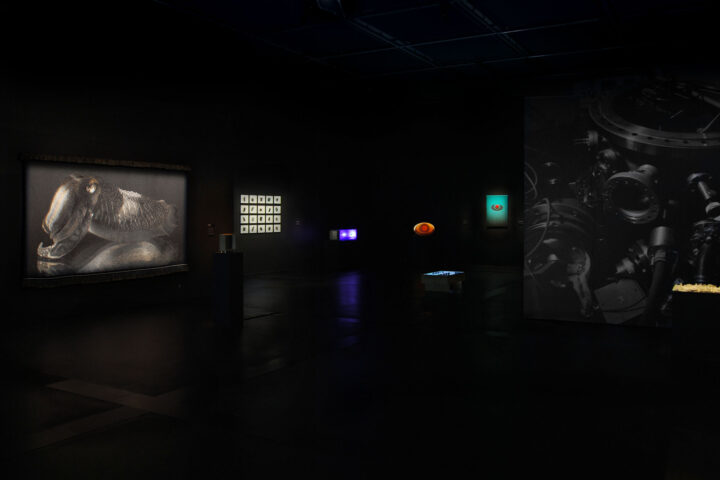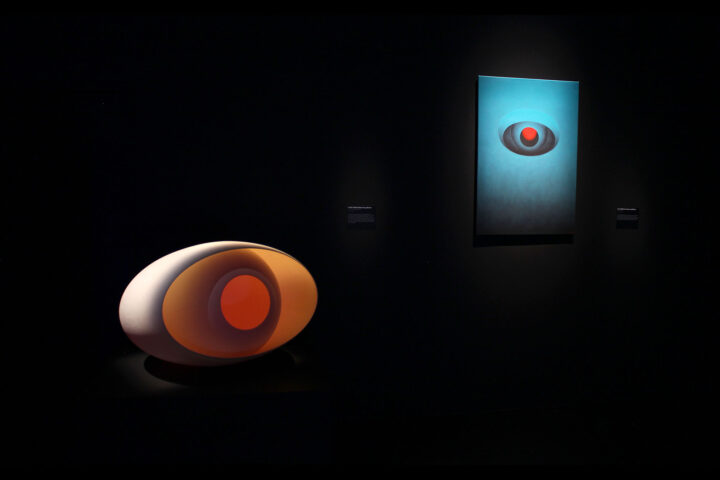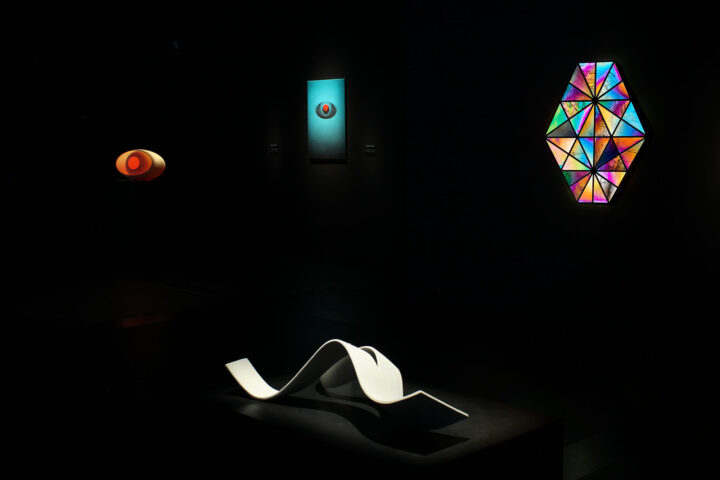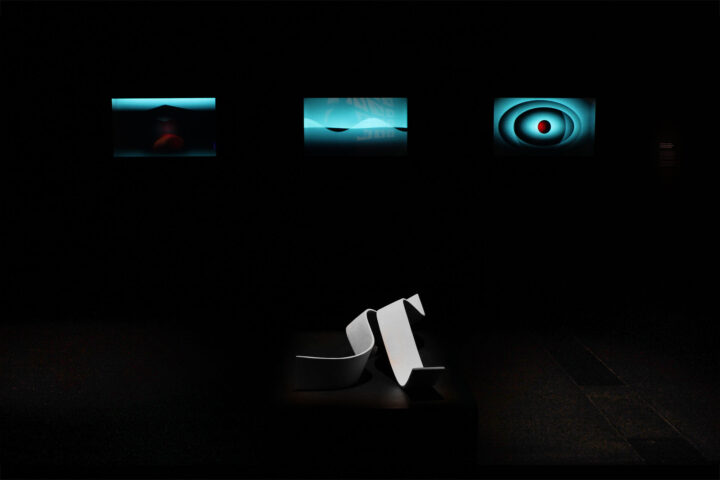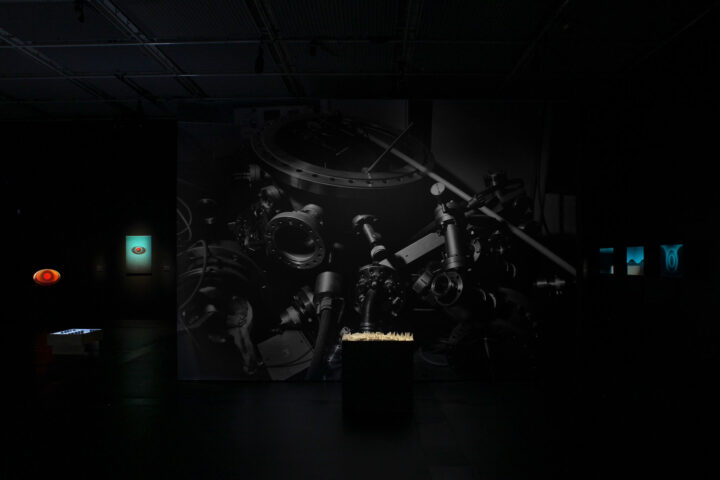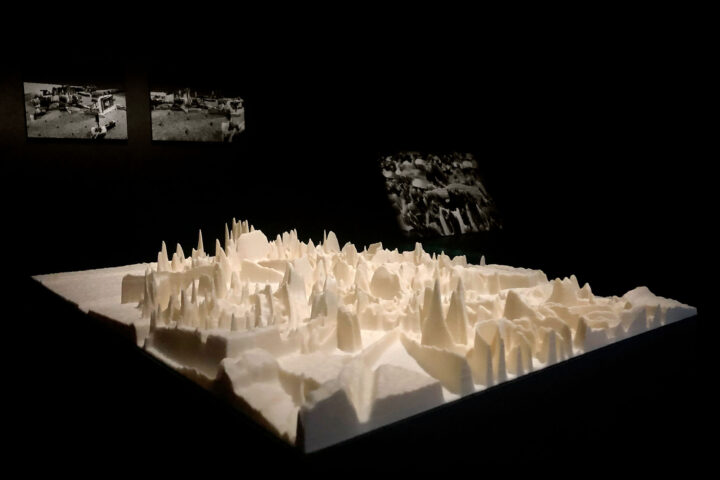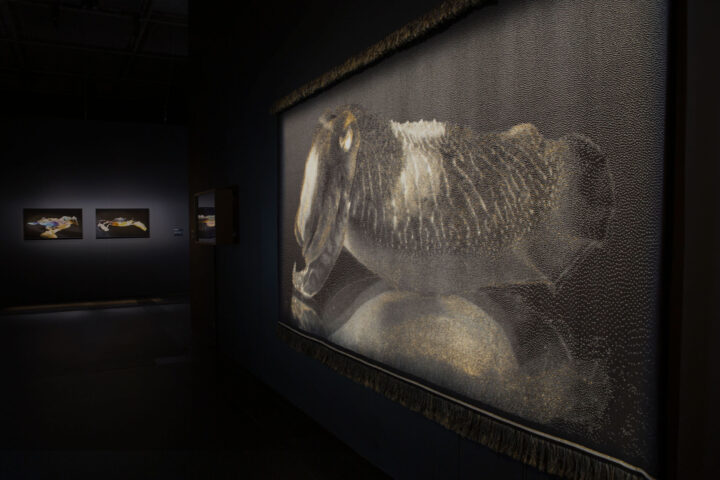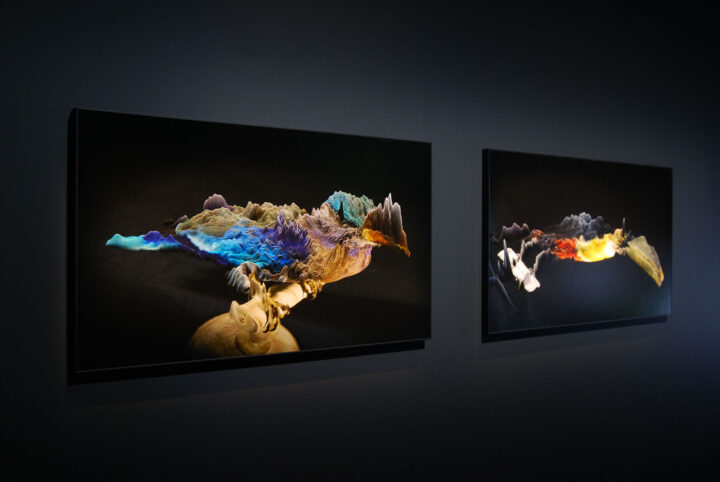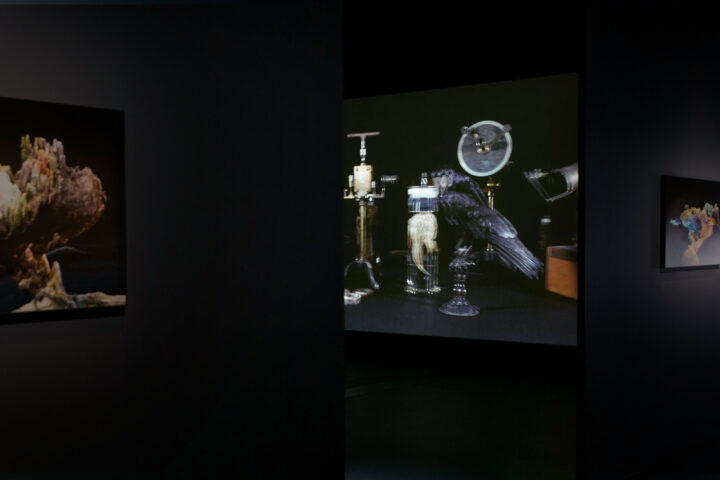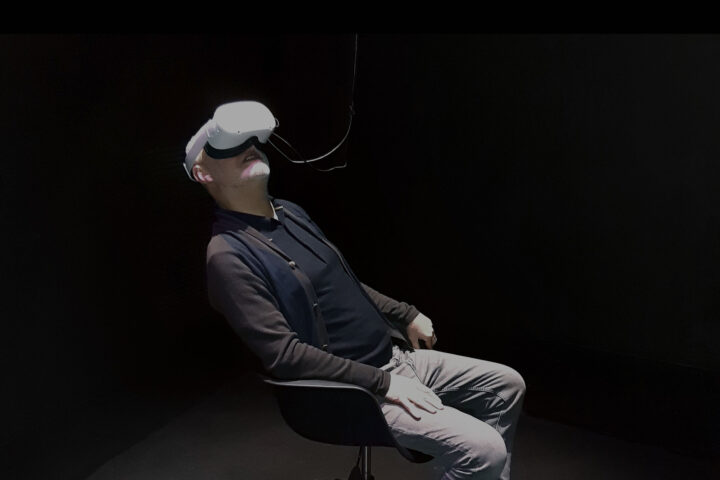An exhibition by Flavien Théry & Fred Murie
Scientific collaboration: Julien Fade
Musical creation: Thomas Poli
The extraordinary ray offers a sensitive approach to a reality that is usually imperceptible to the human eye: the polarization of light, a term describing the vibration trajectory of the waves that make it up. Through some twenty works, combining optical principles and digital technologies, this exhibition invites us to explore this hidden dimension, revealing a porosity between real and virtual, natural and artificial worlds.
This project was born from the collaboration of the artistic duo Flavien Théry & Fred Murie with researcher Julien Fade, as part of an Art & Science residency at the Foton Institute (Rennes 1 University / CNRS). The soundtrack composed by the musician Thomas Poli, broadcasted within the exhibition, helps to establish a climate conducive to immersion in a poetic vision of the world around us.
The large audience it was able to reach during the presentation at the Champs Libres, from November 2022 to March 2023, testifies to the balance found between a demanding artistic approach and a proposal accessible to the greatest number.
Initially designed for a space of 400 m2, the exhibition can however be adapted to different contexts while maintaining its coherence. The project can also be extended through a concert by Thomas Poli, accompanied or not by a video performance by Flavien Théry & Fred Murie.
Beyond our perception
If the reflection of the landscape on the surface of the water constitutes the most common and the oldest factory of images that human beings have been able to experience, it is also the most widespread source of polarized light. Similarly, we are generally unaware that the blue of the sky, the iridescence on the wings of certain birds or the display of liquid crystal screens, constitute various manifestations of this physical phenomenon.
But it was the doubling of an image seen through Iceland Spath — a calcite crystal — that led to the discovery of polarization in the early 19th century. Physicists then described this “wonderful and unusual phenomenon”, as resulting from the trajectories of an ordinary ray, which follows the normal laws of refraction, and an extraordinary ray, which evades them. And it is this original wonder that this project aims to rediscover by offering the public the direct experience of devices that are based on scientific principles to deploy a poetic world.
The piece entitled Le rayon extraordinaire (The Extraordinary Ray), setting in motion a crystal crossed by a laser beam, introduces the visitor to a route that brings together traditional techniques and digital media, contemplative proposals and immersive experiences.
Thus, a sculpture inspired by a mathematical model evoking an eye, a series of charcoal drawings approaching the dark side of crystal, optical-digital sculptures deploying abstract forms based on optical phenomena, obsidian stones dividing white light in changing hues, a virtual ocean revealed by reflection on a black surface, landscapes appearing by elevation of photographic shots, the secret language of a cuttlefish showing itself through a tapestry and a video installation, the confrontation of stuffed animals and old scientific instruments staged in stereoscopic video-projections, appear as so many windows opening onto an imaginary that takes us beyond what we think we know about reality.
Our senses give us access only to a tiny part of reality. The sciences, like the arts, strive to overcome this tangible and observable environment. The exhibition Le rayon extraordinaire (The Extraordinary Ray) thus intends to venture beyond our perception to reveal a world that arouses wonder and commands respect.
Useful links
Production: Champs Libres, Rennes Métropole, Spéculaire, Université Rennes 1.
Parteners: Institut Foton (Université Rennes 1/INSA/CNRS), Service culturel de l’Université Rennes 1, Hôtel Pasteur, INSA de Rennes, Section Arts Plastiques du département des Humanités de l’INSA, Station Marine de Concarneau (MNHN), Project Lab / Pôle de Mécanique et de Technologie de l’Université Rennes 1, Institut des Sciences Chimiques de Rennes, Édulab de l’Université Rennes 2, Les films de l’autre côté, Impersonal Freedom.
Champs Libres Team: Direction artistique : Yves-Marie Guivarch | Coordination générale du projet : Kellye De Vasconcelos | Coordination technique : Candice Rogers | Montage technique : Maël Barbier, Adrien Beaumont, Frédéric Berthon, Alexandre Bertin, Mickaël Cervi, Olivier Le Du, Benjamin Ropert, Arthur Scatton, Annie Tanguy | Graphisme : Stéphane Dumas.
Thanks: Ghizlane Afif, Mehdi Alouini, Nadia Améziane, Jade Bechtel, Cécile Bellanger, Pascal Besnard, Franck Beyer, François Bondu, Steve Bouhier, Dominique Briand, Lise Buisson, Sébastien Cadiou, Guillaume Calvez, Anthony Carré, Anne-Sophie Darmaillacq, Gwenola Drillet, M’Hamed Drissi, Philippe Dorval, Philippe Echard, Ludovic Frein, Philippe Gall, Stéphane Guiral, Yves-Marie Guivarch, Cyril Hamel, Cécile Hölzner-Jacques, Guillaume Julien, François-Xavier Jullien, Patrice Leguesdron, Marie-Aude Lefeuvre, Marion Lemaire, Pierre-Arnaud Lime, Mathieu Maupilé, Yann Molard, Sylvain Pernon, Julie Priser, Gaëlle Richard, Arno Schubert, Benoit Vandame, Tony Vanpoucke.
